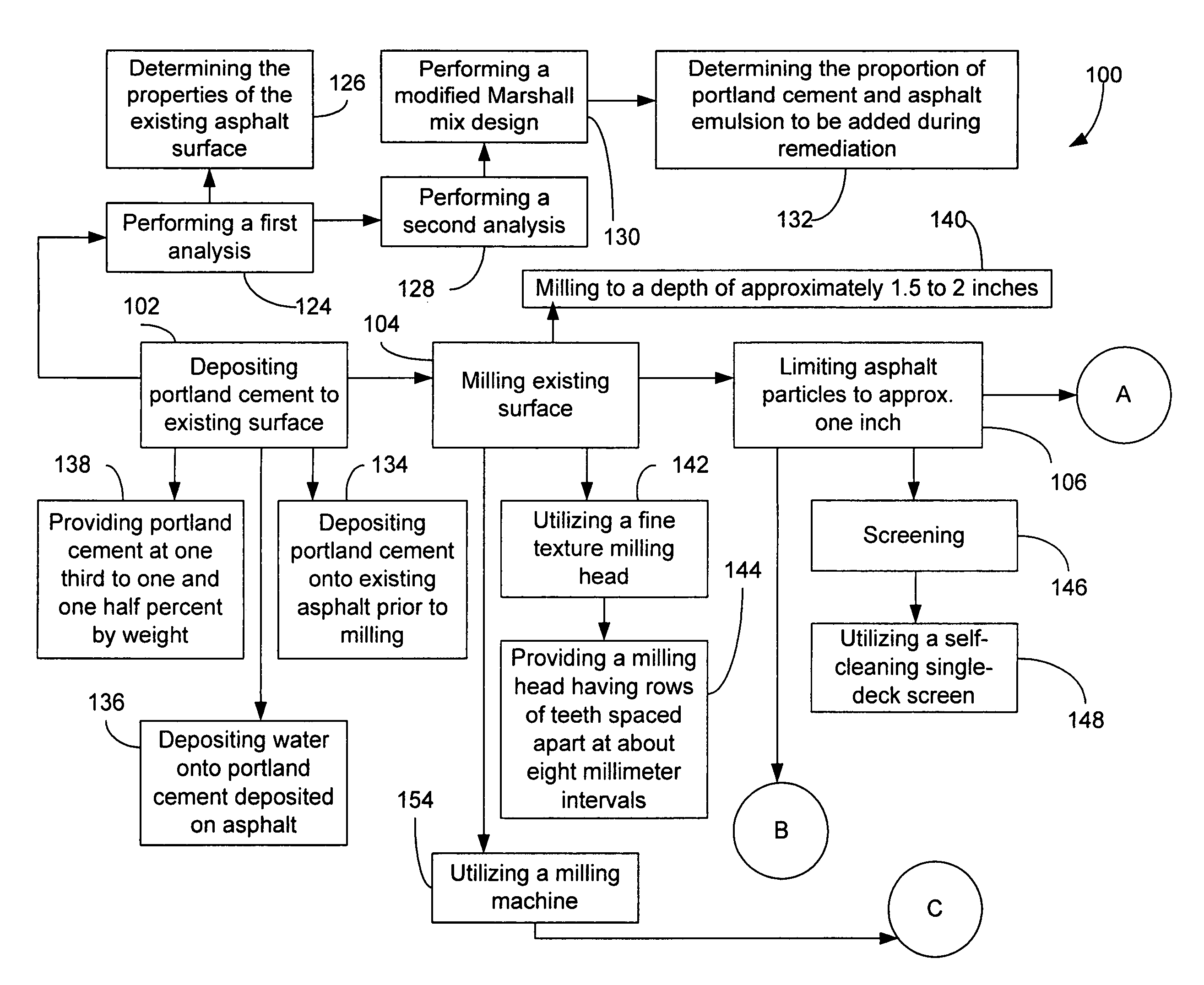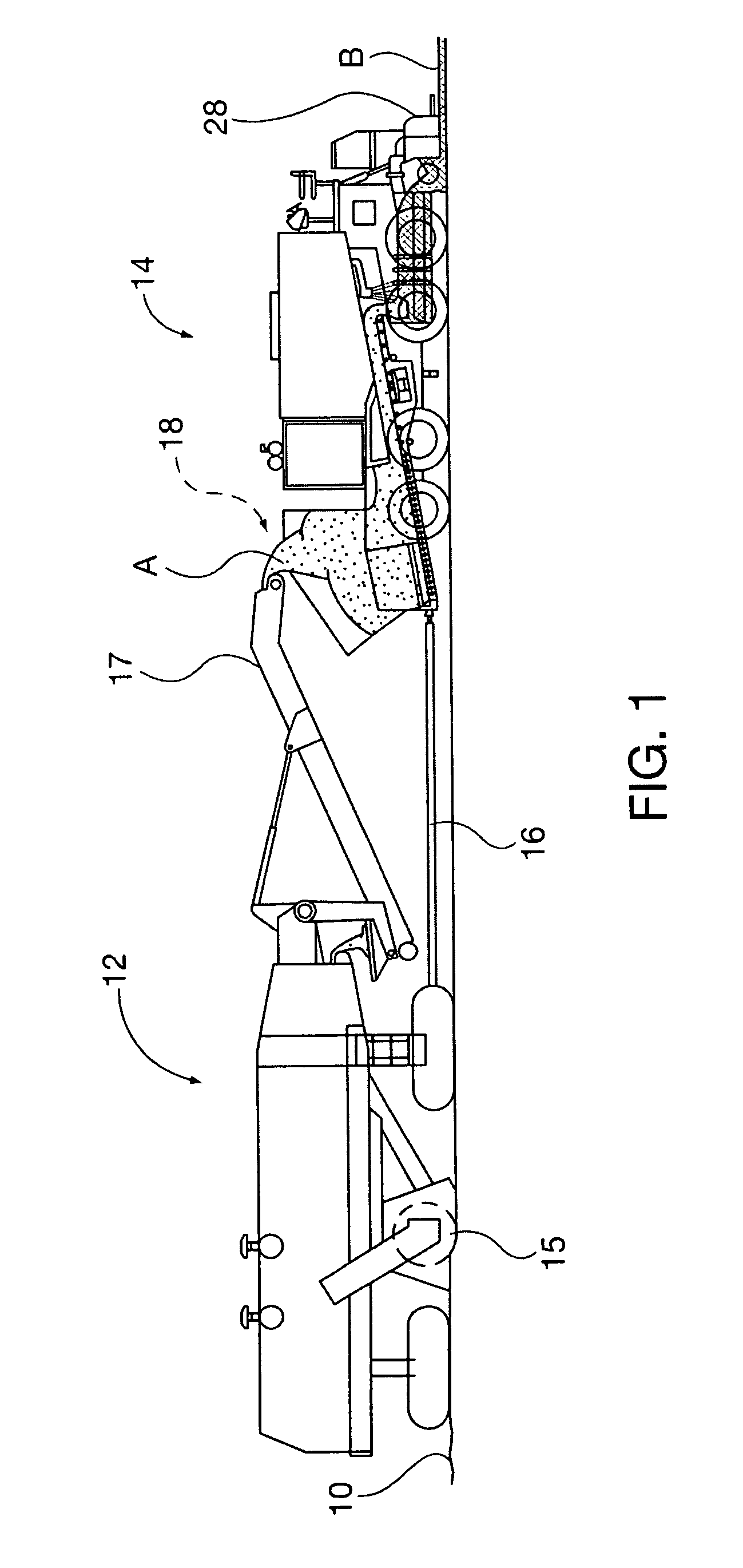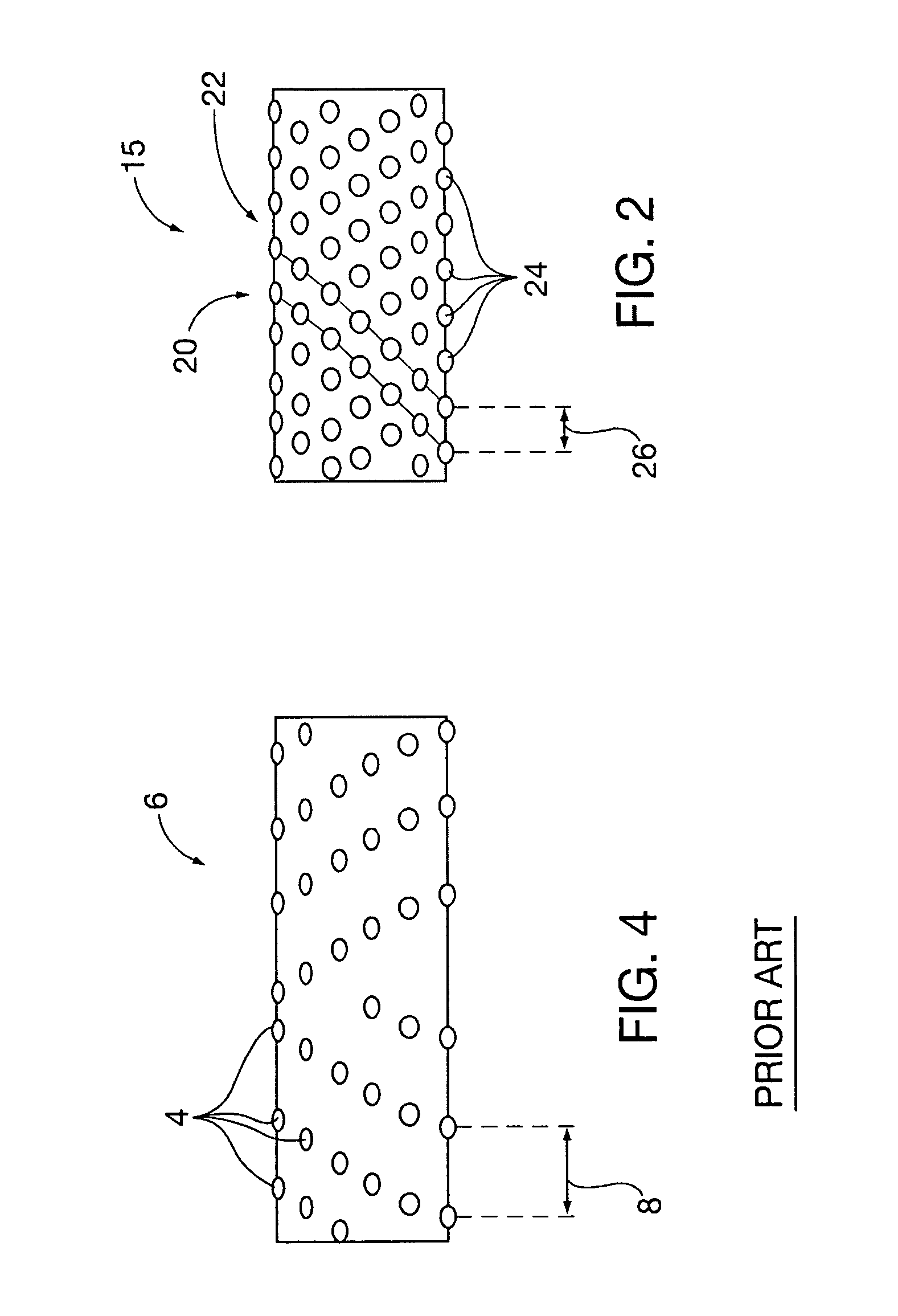Pavement rehabilitation using cold in-place asphalt pavement recycling
a technology of in-place asphalt and pavement, which is applied in the direction of in-place paving, roads, construction, etc., can solve the problems of accelerating eventual failure of the pavement, requiring hot mix asphalt overlay, and reducing the depth of penetration into the original asphalt during milling, so as to reduce the thickness of the pavement, the effect of effective and easy compaction
- Summary
- Abstract
- Description
- Claims
- Application Information
AI Technical Summary
Benefits of technology
Problems solved by technology
Method used
Image
Examples
Embodiment Construction
[0025]FIG. 1 shows equipment for use in remediation of an existing asphalt surface 10 by a method according to at least one aspect of the present invention. A milling machine 12 having a cutting or milling head 15 (see FIG. 2 for a detailed view) is used to mill the existing asphalt surface 10 to generate asphalt particles referred to herein as “asphalt particles A”. The asphalt particles form the basis of recycled asphalt material, which may be returned to the existing asphalt surface 10 in a continuous process.
[0026]Size of particles of RAP obtained by milling is accomplished by using a fine texture milling head, such as the milling head 15 (see FIG. 2). As employed herein, a fine texture milling head is obtained by providing the milling head 15 with rows of teeth 24, such as the rows 20, 22, for example, which rows 20, 22 are spaced apart at intervals of about 8 millimeters or about five sixteenths of an inch. These intervals are indicated in FIG. 2 by the arrow 26. This may be c...
PUM
| Property | Measurement | Unit |
|---|---|---|
| Length | aaaaa | aaaaa |
| Length | aaaaa | aaaaa |
| Length | aaaaa | aaaaa |
Abstract
Description
Claims
Application Information
 Login to View More
Login to View More - R&D
- Intellectual Property
- Life Sciences
- Materials
- Tech Scout
- Unparalleled Data Quality
- Higher Quality Content
- 60% Fewer Hallucinations
Browse by: Latest US Patents, China's latest patents, Technical Efficacy Thesaurus, Application Domain, Technology Topic, Popular Technical Reports.
© 2025 PatSnap. All rights reserved.Legal|Privacy policy|Modern Slavery Act Transparency Statement|Sitemap|About US| Contact US: help@patsnap.com



